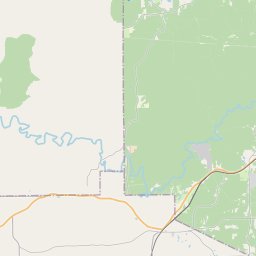Site of Thaddeus Post Office
Historical marker location:






1775: The Second Continental Congress establishes the Constitutional Post to provide postal services in the thirteen American colonies. Benjamin Franklin is appointed as the first Postmaster General.
1792: The Postal Service Act is passed, officially establishing the United States Postal Service as a federal agency. It sets the foundation for the organization and regulation of postal operations.
1847: The introduction of prepaid adhesive postage stamps revolutionizes mail delivery, simplifying the process and promoting efficiency.
1860: The Pony Express, a fast mail delivery service, is launched to transport mail between the eastern and western regions of the United States. It becomes famous for its daring riders and swift delivery.
1863: Free city delivery is introduced, allowing mail to be delivered directly to urban households and businesses rather than being picked up from local post offices.
1864: The Postal Money Order system is established, providing a secure way for people to send money through the mail.
1896: Rural Free Delivery (RFD) is implemented, bringing mail delivery to rural areas for the first time. This service significantly improves communication and connects rural communities to the rest of the country.
1971: The United States Postal Service is reorganized as an independent agency within the federal government, operating as the USPS. It is no longer directly controlled by the Postmaster General.
1974: The USPS introduces the ZIP (Zone Improvement Plan) Code system, which assigns unique codes to geographic areas to improve mail sorting and delivery efficiency.
1997: The USPS launches its website, usps.com, providing online access to postal services, tracking, and information.
2001: Following the 9/11 terrorist attacks, the USPS faces security challenges and undergoes significant changes to enhance mail screening and protection.
2013: The USPS announces the end of Saturday mail delivery for regular letters and reduces delivery to five days a week.
Present: The USPS continues to be a vital service, handling billions of pieces of mail annually and adapting to changes in technology, communication, and the shipping industry. It plays a crucial role in connecting people, facilitating commerce, and serving as a backbone of the American communication infrastructure.
This timeline provides an overview of key milestones in the history of the USPS, which has played a crucial role in facilitating communication and connecting communities throughout the United States for over two centuries.
The Confederate submarine H.L. Hunley, which was the first submarine to sink an enemy ship in combat, was built in Mobile, Alabama in 1863.
In the early 19th century, European settlers began to enter the area and establish towns. The city of Dadeville was founded in 1837 and became the county seat of Tallapoosa County. As more settlers arrived, the county's population grew rapidly, primarily through agriculture and the production of cotton.
During the American Civil War, Tallapoosa County played a significant role. It was a strategic location, as the railroad passing through the county connected Montgomery and Atlanta. The county experienced battles and skirmishes as Union and Confederate forces vied for control of the area. After the war, the county faced a challenging period of reconstruction and the gradual shift from agriculture to industry.
In the 20th century, Tallapoosa County saw significant advancements and changes. The construction of Lake Martin in the 1920s provided opportunities for recreation and tourism, boosting the county's economy. The county also became more industrialized, with the growth of factories and manufacturing facilities. Today, Tallapoosa County continues to thrive, blending its historical roots with modern development and providing a diverse array of cultural, economic, and natural attractions for visitors and residents alike.
Tallapoosa County Timeline
This timeline provides a condensed summary of the historical journey of Tallapoosa County, Alabama.
- 1770s: The Creek Native American tribe occupies the land.
- 1814: Treaty of Fort Jackson is signed, opening the area for settlement.
- 1832: Tallapoosa County is officially established.
- 1834-1835: Construction of the first courthouse in Dadeville.
- 1861-1865: Tallapoosa County citizens fight in the American Civil War.
- 1935: Lake Martin is created as part of a hydroelectric project.
- 1965-1966: The filming of "To Kill a Mockingbird" takes place in Dadeville.
- 1990: Completion of the Horseshoe Bend National Military Park visitor center.